Lake Tana is perhaps most famous for the monasteries sprinkled across its shoreline and islands. Many monasteries date from the late 16th or early 17th century, though most were founded much earlier and likely were the site of pre-Christian shrines.
One of the best examples of traditional Ethiopian monasteries, Ura Kidane Meret, sits on the Zege Peninsula and its maqdas (the central core of the circular structures) is very elaborately painted.
The Zege Peninsula is 35 minutes by boat from Bahir Dar (if you secure a boat with a 40 HP motor).
It is said the Ark of the Covenant was hidden at another monastery on the lake, Tana Cherkos, for 800 years. However, the present 19th-century monastery at Tana Cherkos is, to put it politely, rather modest.
Women are only permitted to visit certain monasteries and Tana Cherkos is not one of them.
****
Upon arrival at the Zege Peninsula, one hikes for ten to fifteen minutes through the jungle to reach Ura Kidane Mehiret…
…Before arriving at a small village bordering Ura Kidane Mehiret:
Just after the village, one enters the grounds of the monastery:
A grave on the grounds of the monastery:
A piece of a wall surrounding the monastery grounds was being repaired and the tools being used were medieval. For example, instead of using a wheelbarrow, these were being used to haul heavy stones from the shores of Lake Tana:
The exterior of Ura Kidane Mehiret:
A priest on the exterior of Ura Kidane Mehiret:
The first ring of the interior of Ura Kidane Mehiret:
As mentioned above, the inner core of the monasteries is called the maqdas. Worshippers face onto the maqdas, which are painted with biblical scenes. Colors are rich and bright, yellow, red, olive and blue, and are applied directly onto a fibrous paper bonded to the wall. In a country with only 25 per cent literacy, these narrative paintings have the same function as medieval cathedral stone carvings and stained glass windows. The paintings come across as formally naive, almost awkward. As an interesting “oh by the way”, I was informed that the maqdas at Ura Kidane Mehiret was constructed out of animal dung.
The maqdas:
A closer look at the maqdas paintings:
Some of the religious scenes are easy to recognize, such as St. George and his dragon:
Others are not… It looks like this guy is pooing or farting and is being admonished for wiping his butt with his hand rather than the piece of toilet paper being offered by the priest in the background. Priests just take all of the fun out of life:
Other scenes offer displays of warmth and friendliness:
Outside the main monastery is a building housing a collection of Ethiopian religious iconography, primarily a collection of 16th- and 18th- century crosses and crowns (Note the man with the rifle guarding the collection):
Of more interest to me than the crosses and crowns though was this collection of religious books – some said to date back to the 13th century:
A priest at Ura Kidane Mehiret watching the goings on:
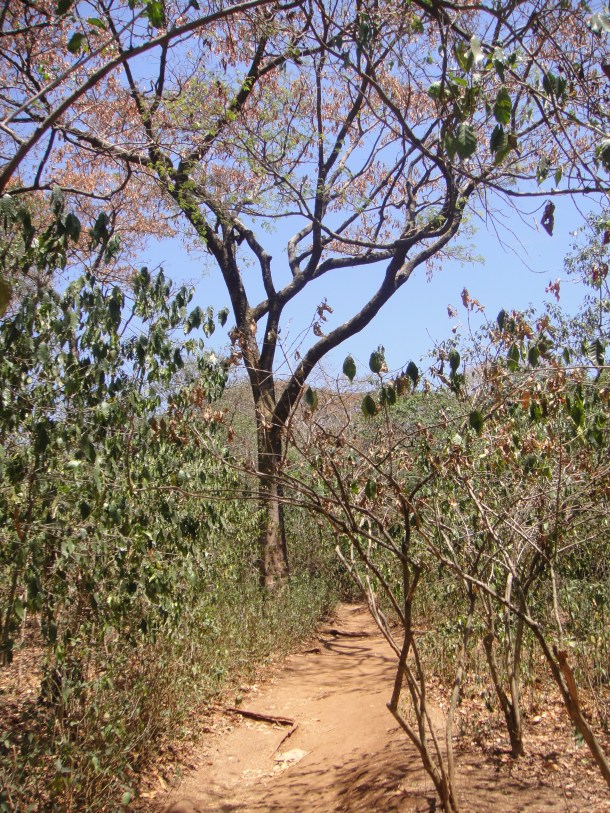
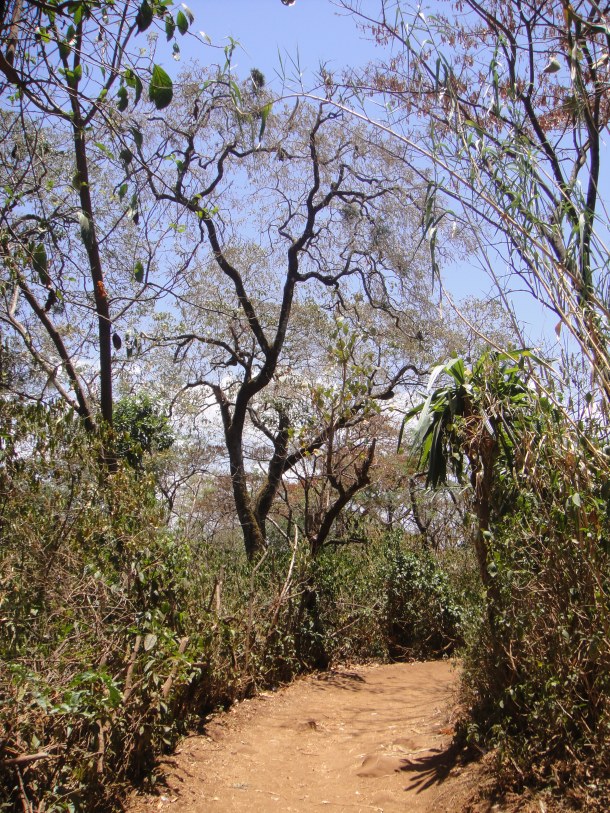
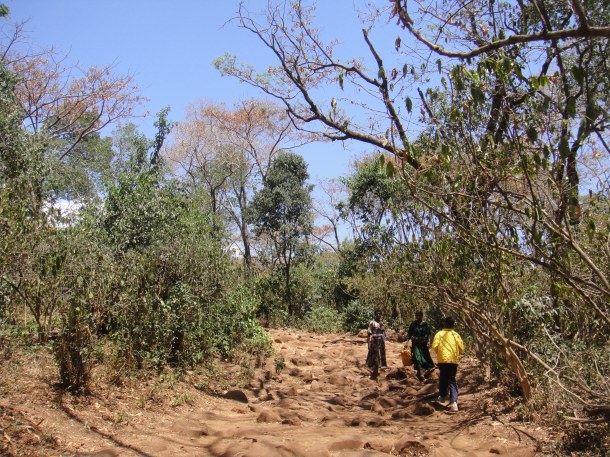
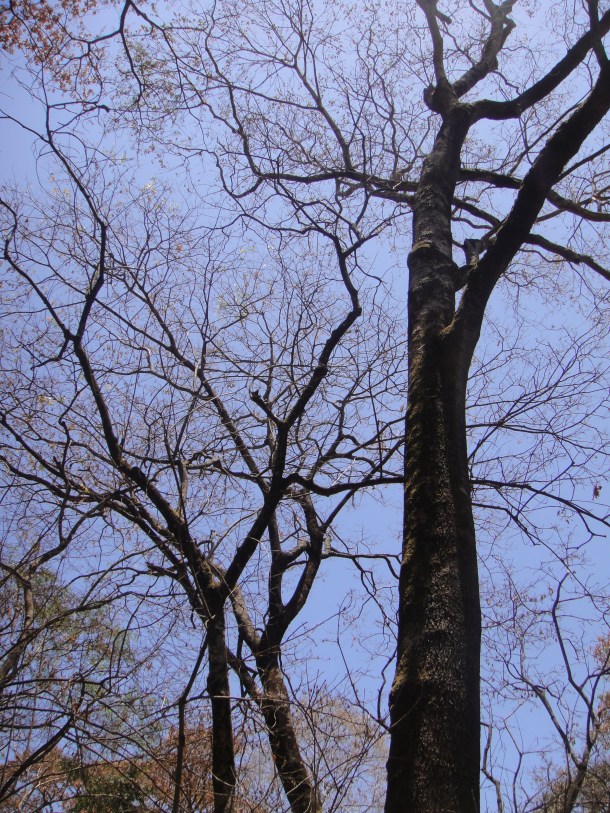
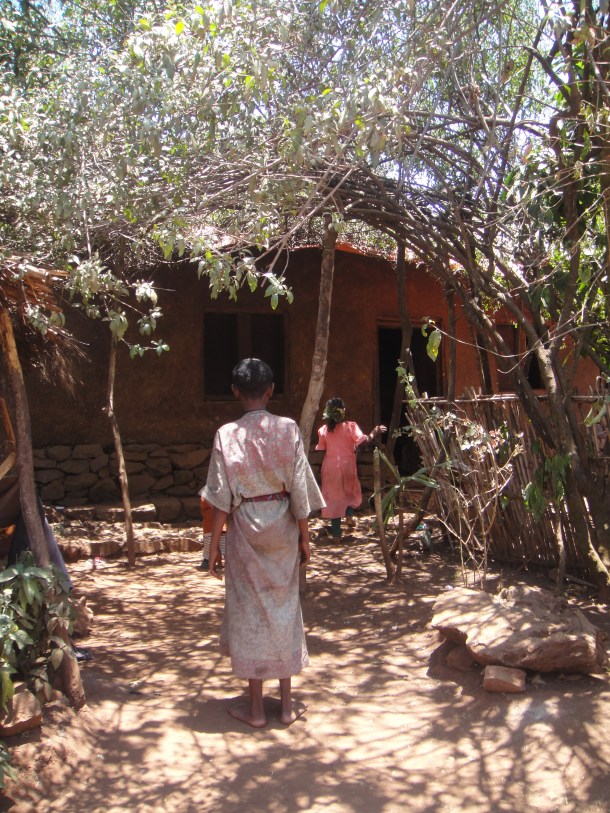
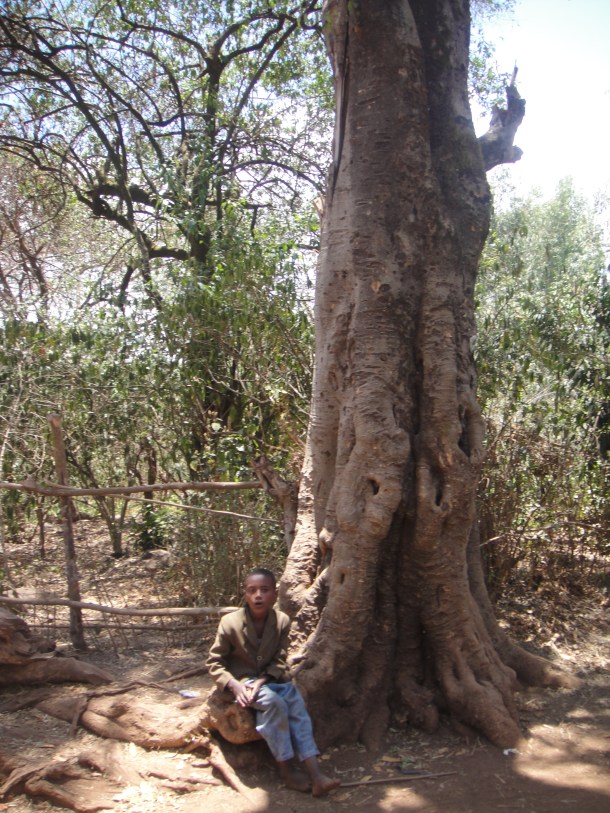
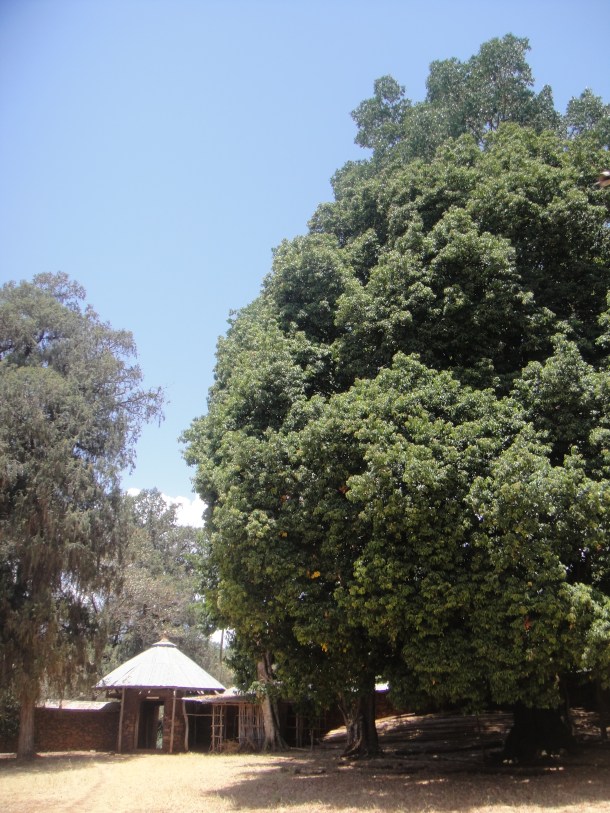
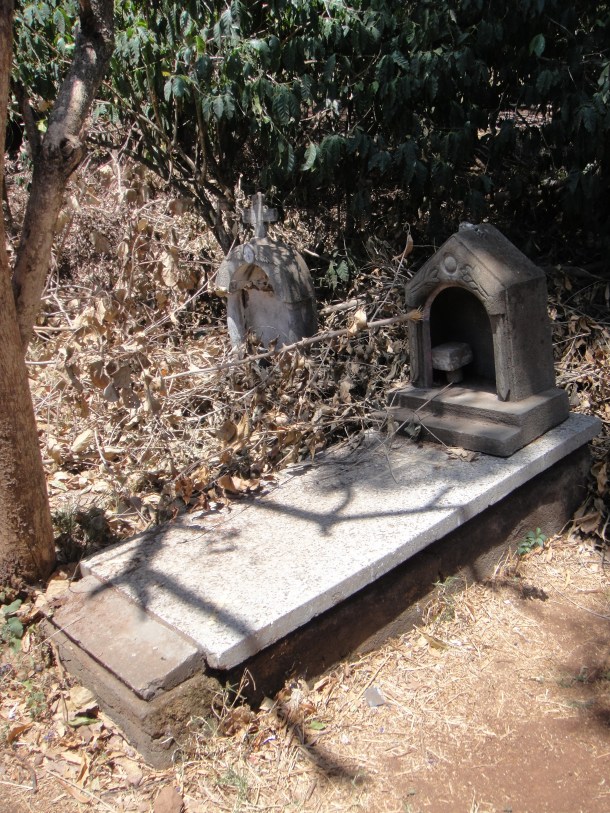
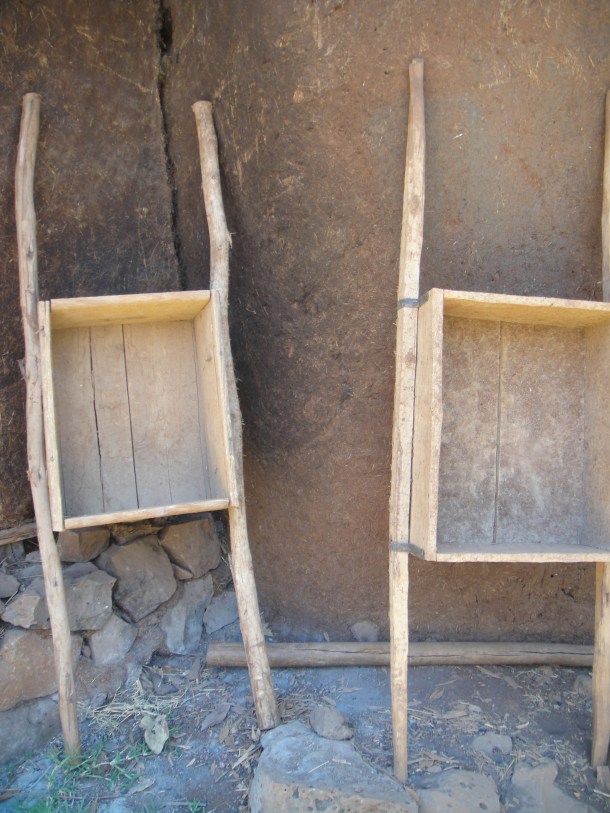
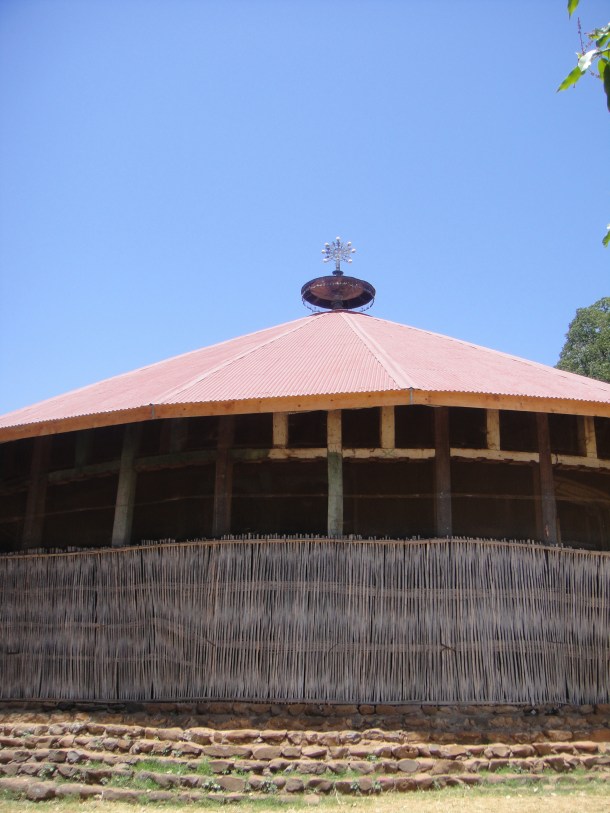
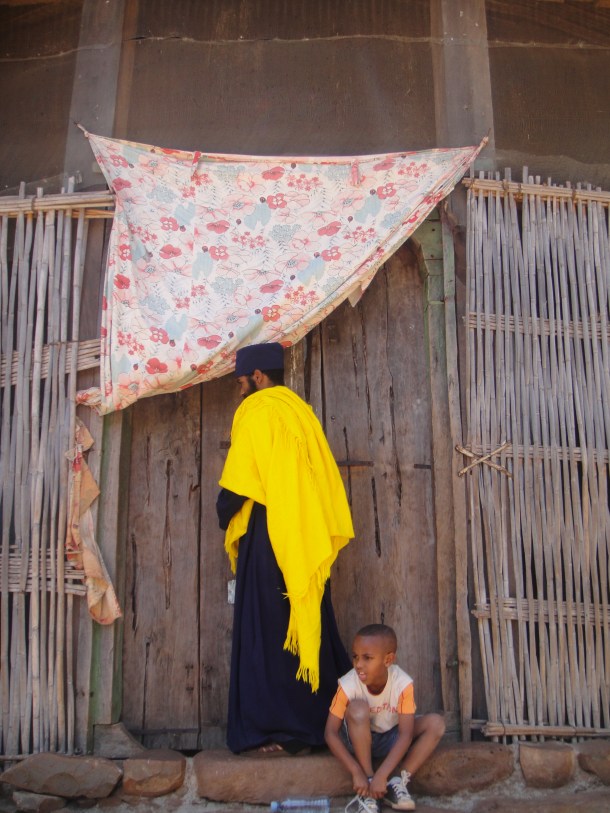
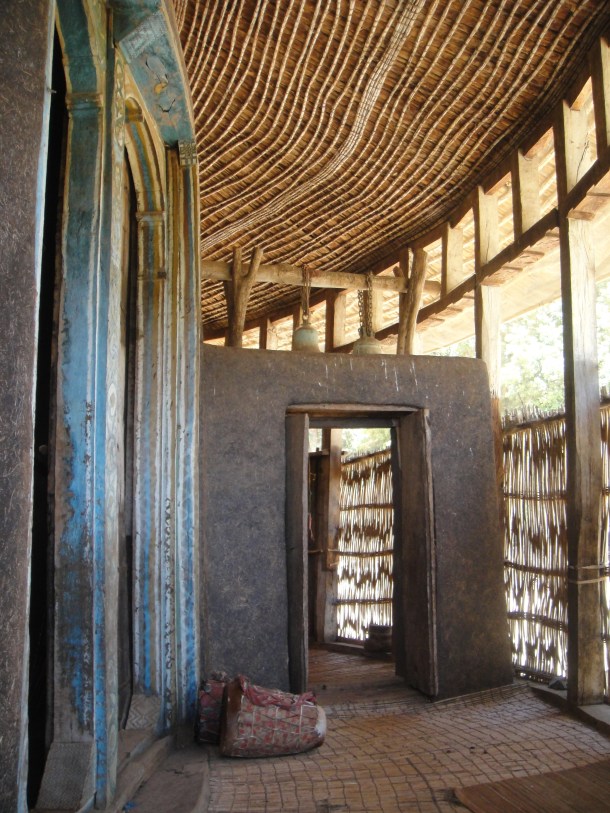
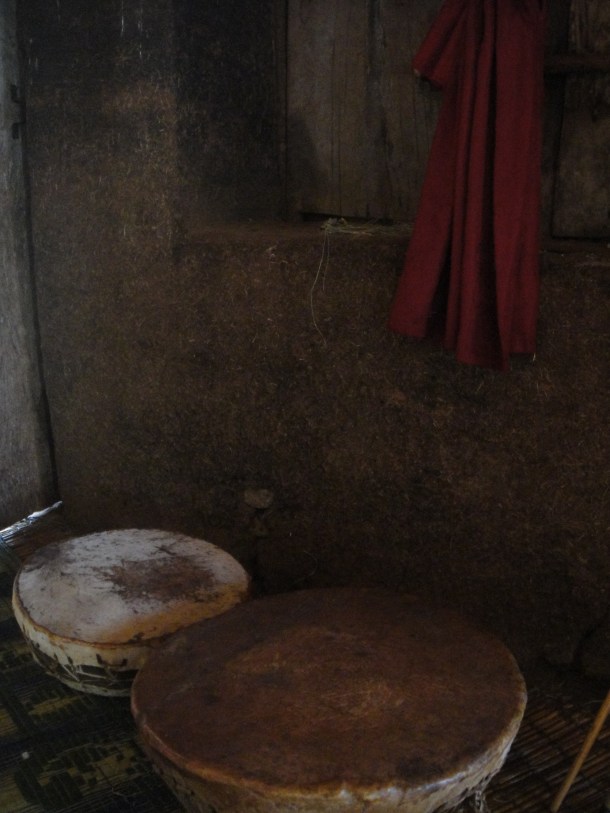
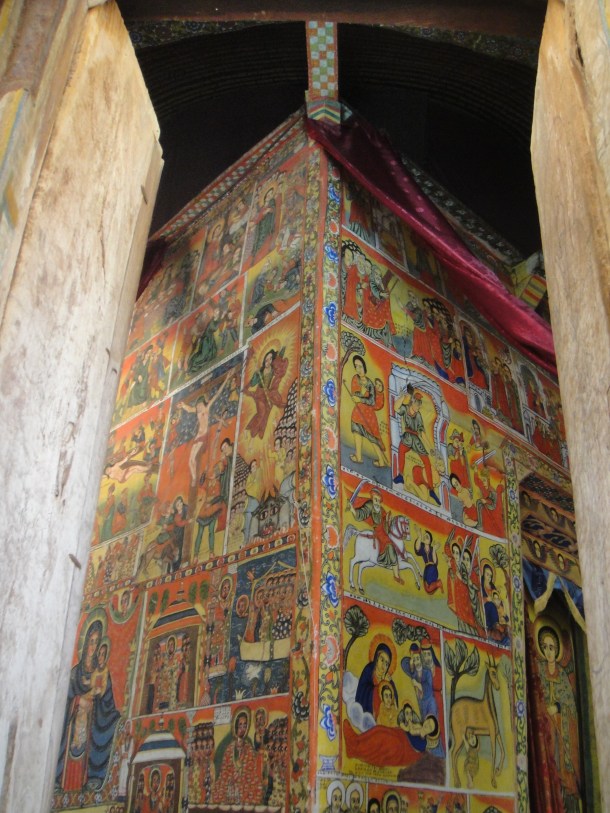
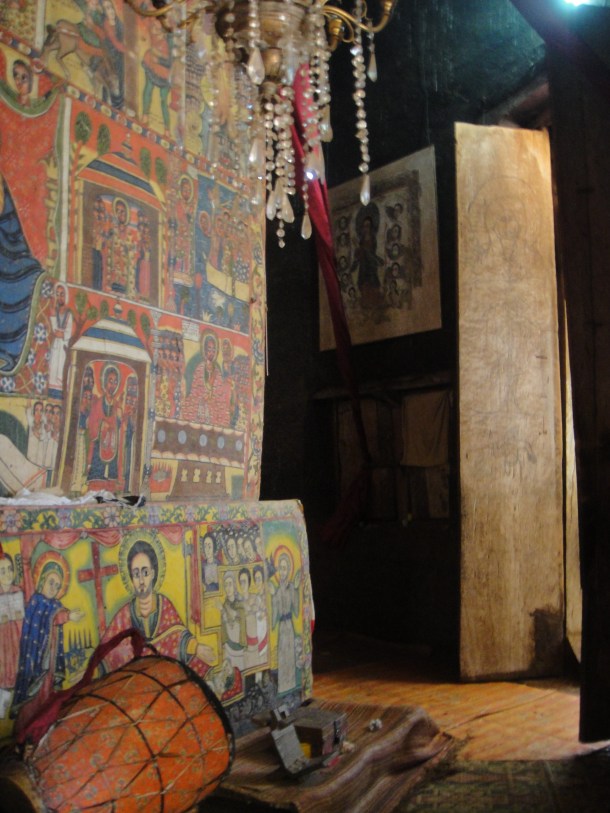


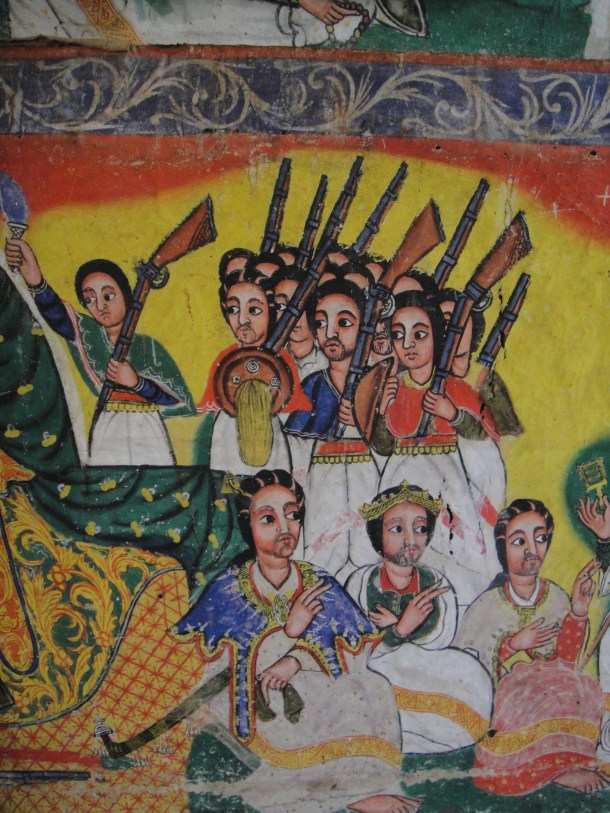
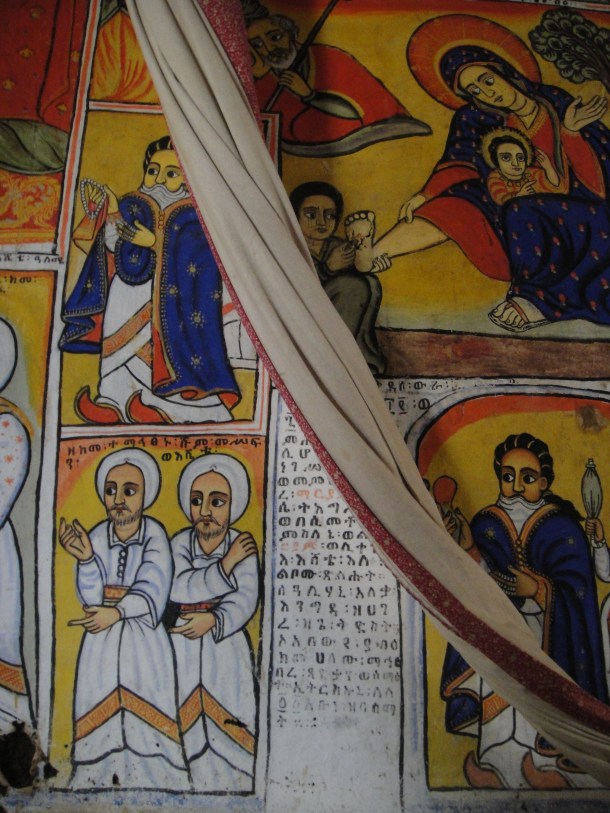
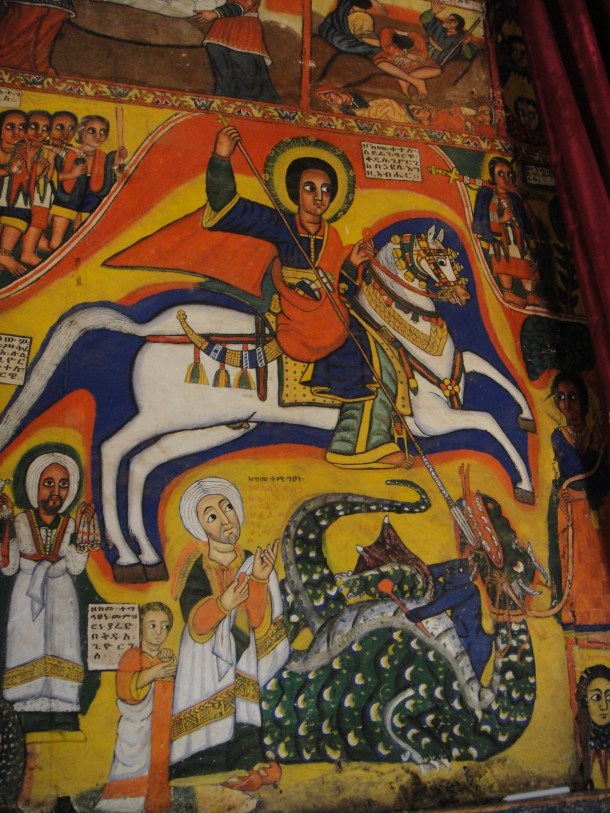
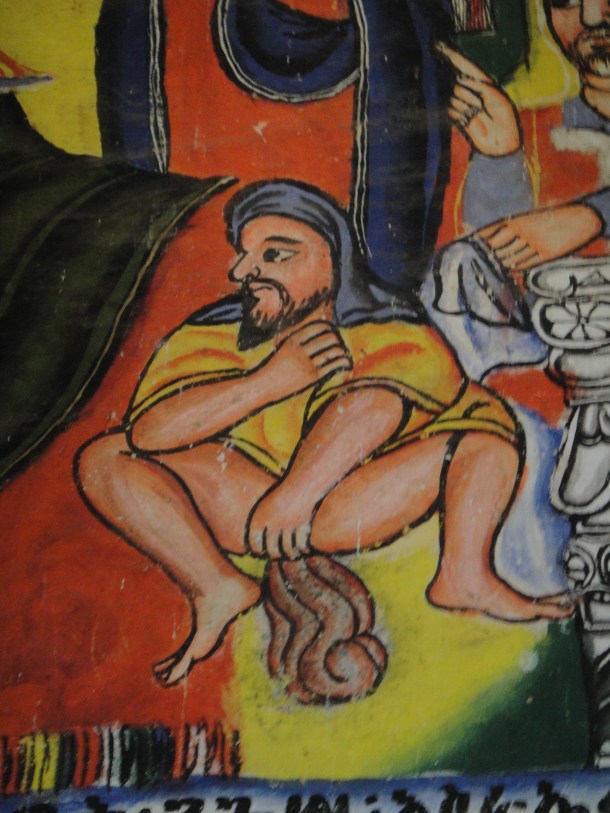
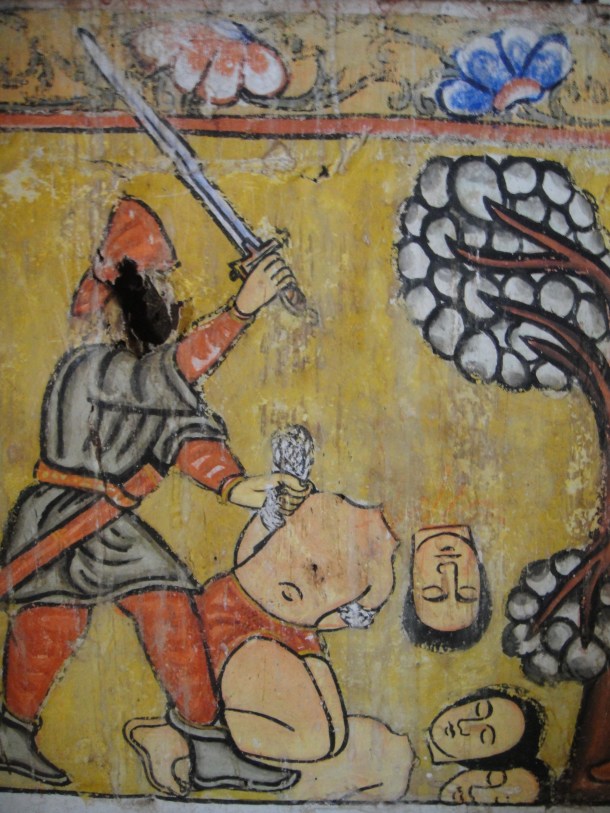
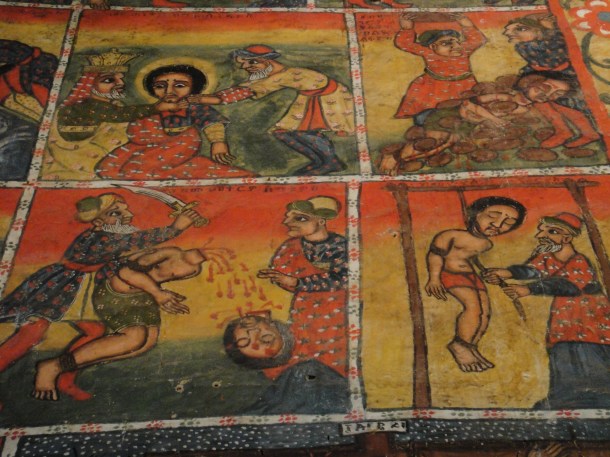
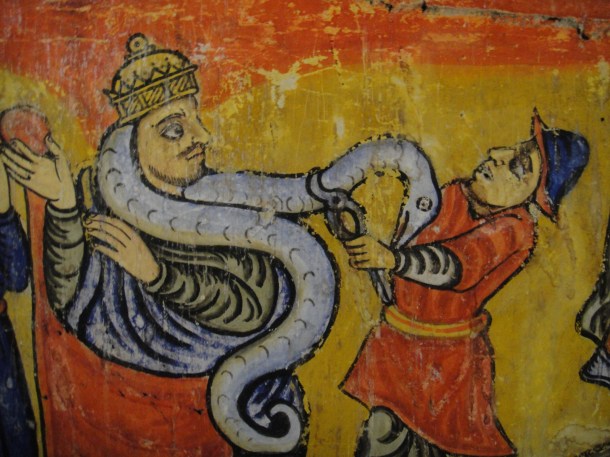
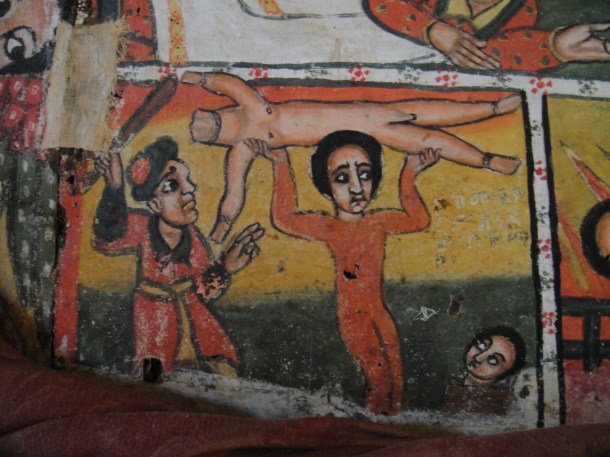
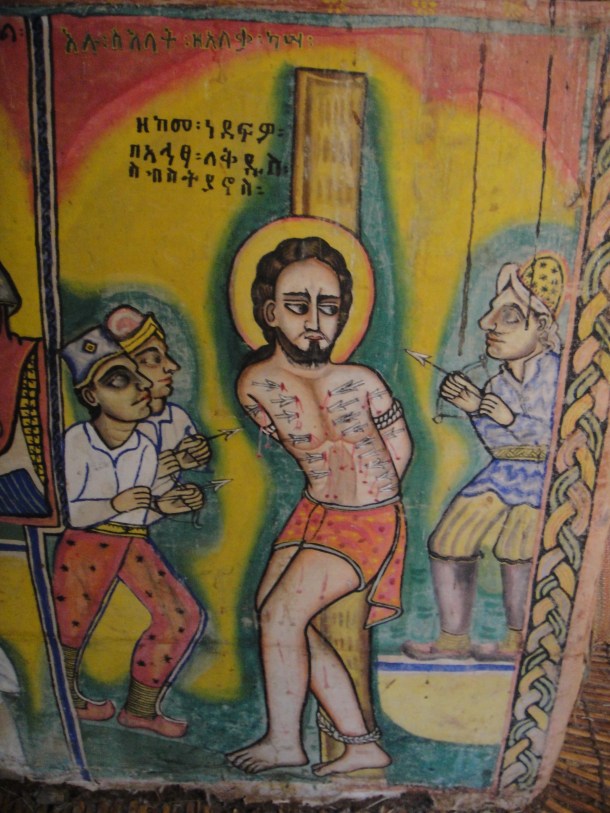
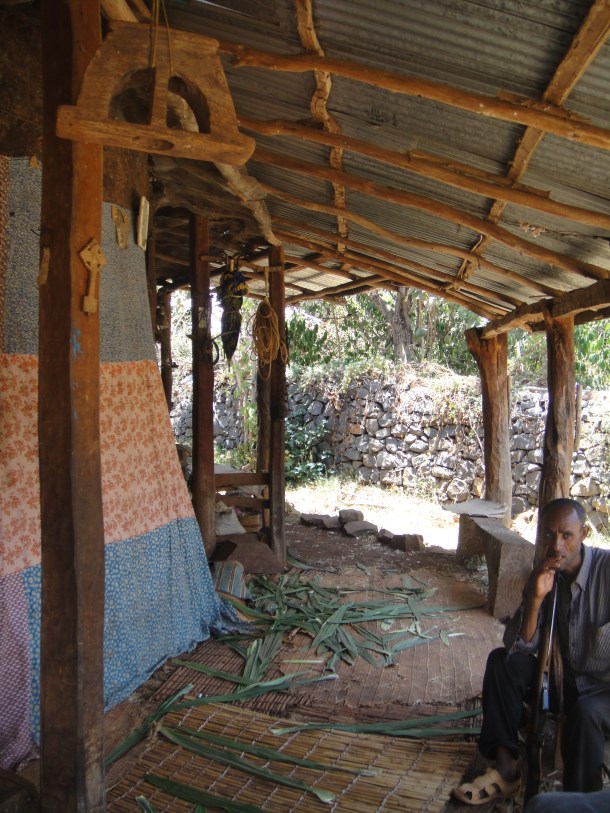
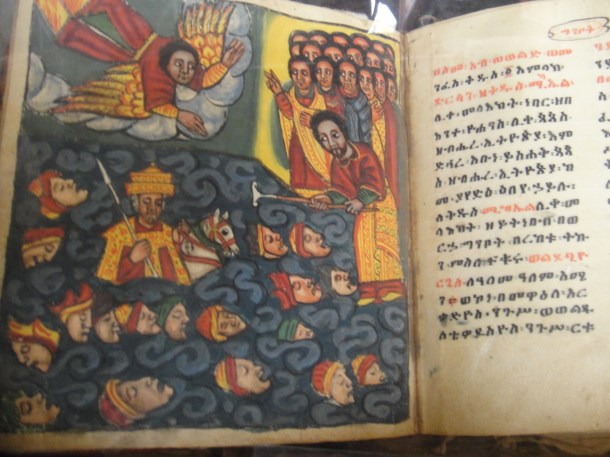
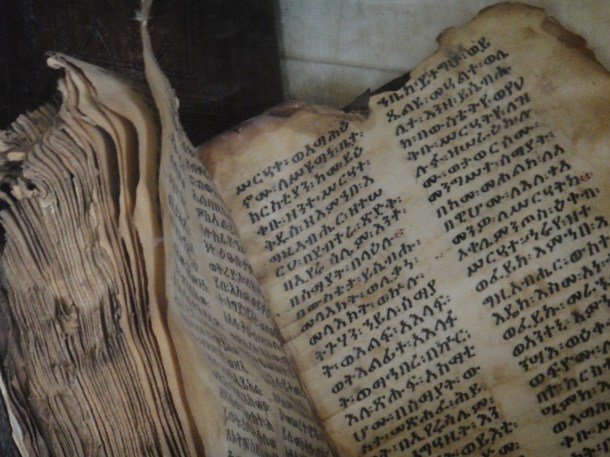
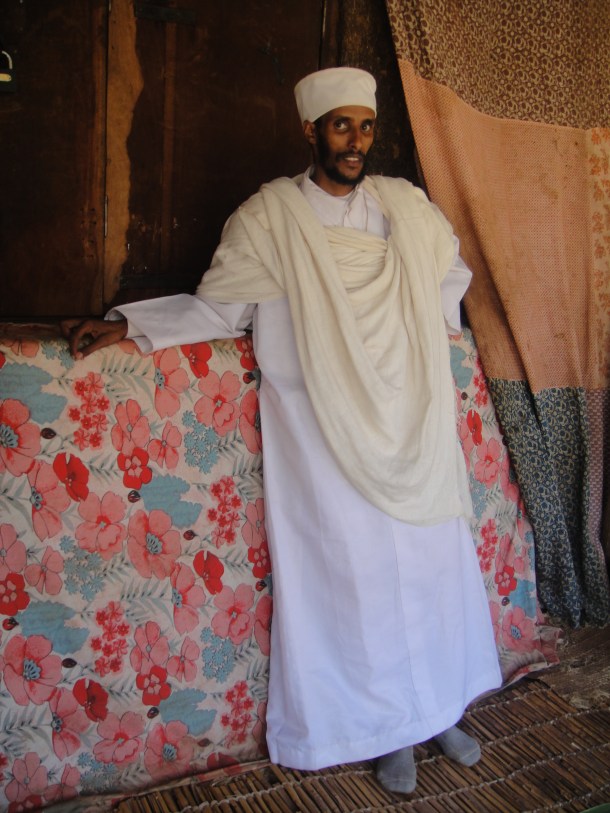
Nice blog. I just bookmarked you on my bloglines.
Sent from my iPad 4G
great job, I blogged your page as a reference on my pictures
The painting of the martyrdom of Saint Sebastian (the guy tied to the post with all the arrows in his chest) is really interesting. The “Romans” who killed him are depicted as either a kind of Portuguese conquistador or bizarro Italian army officers. Great pics.
I think the hospitality you’re referring to was not that of the Christians. These scenes depict the persecution of Christians by Moslems – note the dress of those wielding weapons. Note also that frequently the victims have halos.
That is an excellent point, Robyn, and upon re-examining the pictures, I suspect that you are correct.
HI Justin, If, as I suspect from his clothing and action, the guy pooing is a Muslim -correctly using his left hand to clean himself after defecating – then the meaning of the priest proffering the cleansing paper is twofold: admonishment both for being a Muslim, and for the Muslim practice of toilet behaviour. Jan
PS – the state of those exquisite books is heartbreaking.
That’s a very interesting interpretation of the paintings and one I had not considered. Your analysis makes a great deal of sense and, given the context, I believe you are most likely correct.
Great comment, Jan. I thank you for your keen eye and perspective…
Yes, the condition of the books and the manner in which they were stored was definitely disappointing.
fuck them
hi, i’m so excited when i see this blog. i really love it. i have never seen it with my eyes. thank you very much.
God bless U
Getinet
Arbaminch, Ethiopia